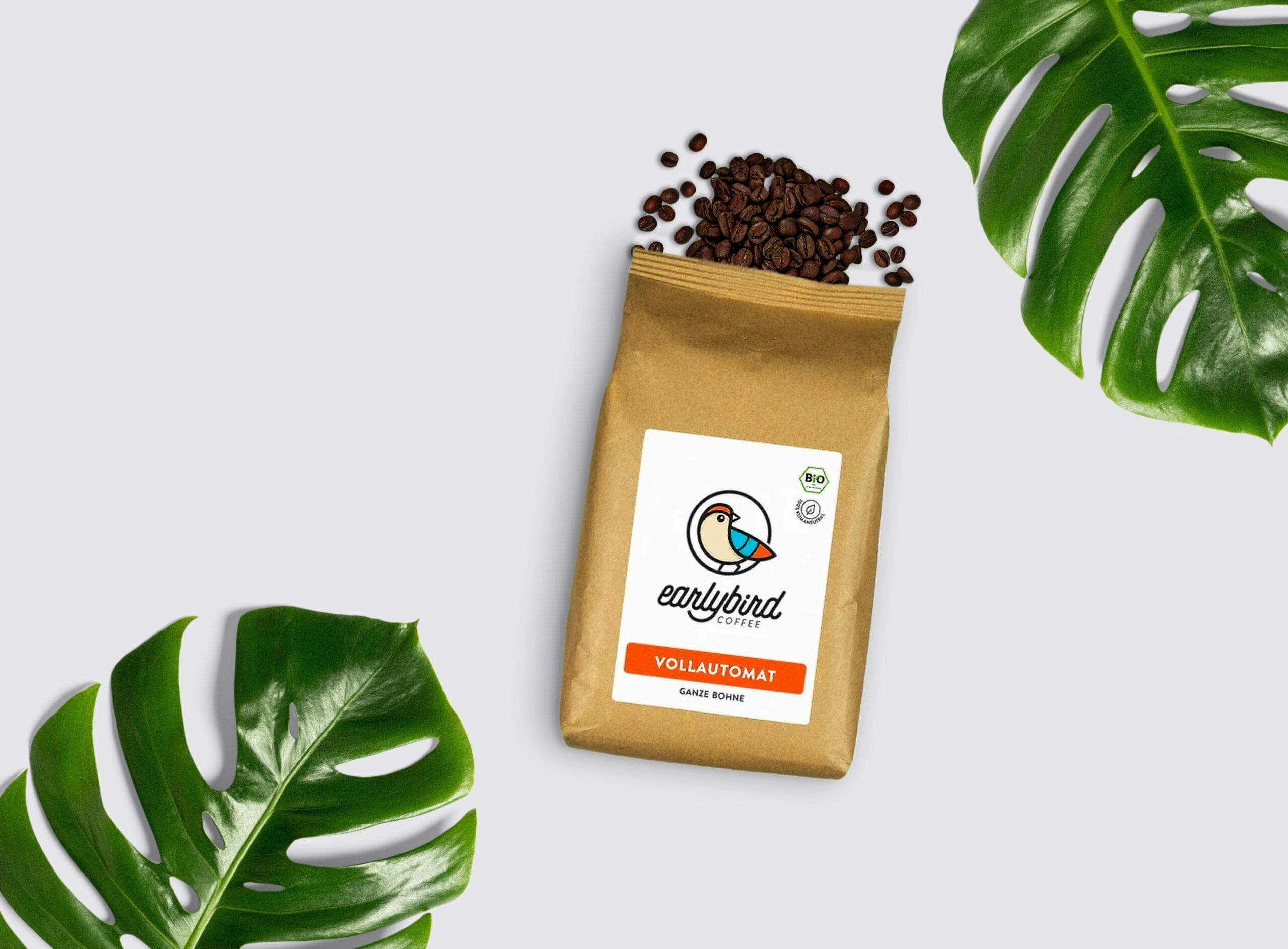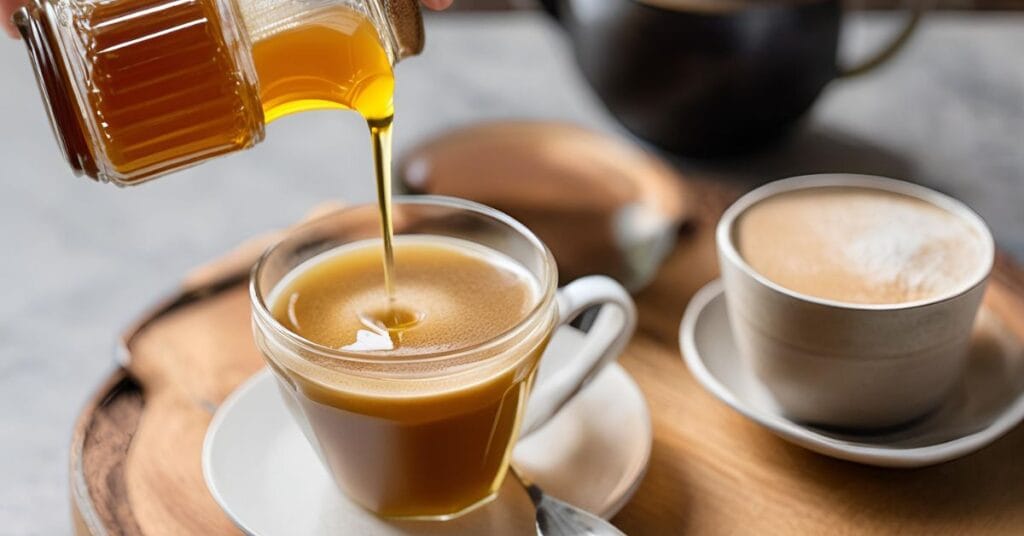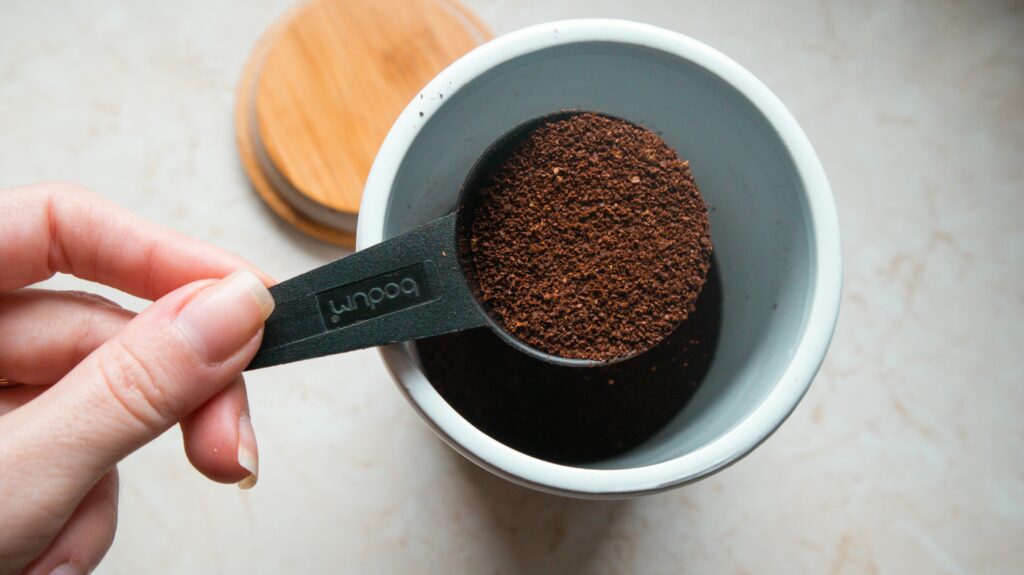Table of Contents
ToggleThe Importance of Coffee Packaging
Coffee packaging plays a pivotal role in shaping consumer preferences and choices. It serves as the first point of interaction between the product and the buyer, effectively acting as a silent salesperson that communicates essential information about the coffee inside. One crucial function of coffee packaging is to protect the product from external elements such as light, moisture, and air, which can drastically affect the quality and freshness of the coffee beans. Proper packaging ensures that the aroma and flavor of the coffee are preserved, enhancing the overall consumer experience.
Moreover, coffee packaging is a powerful communicator of brand values and product quality. Brands invest considerable resources in creating packaging that not only safeguards the product but also reflects their identity and ethos. Elements such as sustainability, origin, and ethical sourcing can be highlighted through thoughtful packaging design, which further resonates with increasingly conscious consumers. For example, the use of eco-friendly materials can appeal to environmentally aware buyers, while premium packaging can convey a sense of luxury and exclusivity.
The psychological aspects of packaging design cannot be overlooked. Research indicates that colors and fonts significantly impact consumer perception and can evoke emotional responses. For instance, vibrant colors often attract attention and convey energy, making them suitable for brands aiming to appeal to younger audiences. Conversely, muted tones may communicate sophistication and elegance, targeting a more mature consumer base. Additionally, font choice plays a critical role; a modern and sleek font can imply innovation, while a traditional serif font might instill a sense of heritage and reliability. Therefore, coffee packaging does more than just protect the product—it encapsulates brand messaging and shapes consumer perceptions in a competitive market.
Visual Appeal: Attracting the Eye
The visual elements of coffee packaging play a crucial role in capturing consumer attention and influencing purchasing decisions. Research indicates that colors, graphics, and overall design significantly impact the appeal of a product. For the coffee market, a well-designed package not only communicates the brand identity but also evokes specific emotions associated with the product. For instance, warm colors such as browns and golds often convey warmth and comfort, appealing to consumers’ desire for a cozy beverage. In contrast, vibrant colors can communicate energy and freshness, attracting a younger demographic.
Successful coffee brands have demonstrated the power of visual appeal through innovative packaging designs. Brands like Blue Bottle Coffee utilize minimalist and sophisticated aesthetics to position themselves as premium products, while Starbucks adopts a recognizable green color palette that signifies sustainability and a connection to nature. These examples highlight how effective visual design can differentiate a brand in a competitive marketplace, capturing the essence of the product and its intended audience.
To create visually appealing coffee packaging, it is essential to focus on several key design elements. First, understanding the target audience is paramount. For instance, artisan roasters may benefit from rustic, hand-drawn graphics that emphasize craftsmanship, while larger brands may opt for sleek and modern designs that suggest convenience and accessibility. Additionally, the choice of typography and imagery should align with the brand’s message, reinforcing the desired emotional response. Incorporating high-quality materials can also enhance the visual experience, as tactile elements add an extra layer of engagement.
Ultimately, brands need to strike a careful balance between aesthetics and functionality. While an eye-catching design can draw consumers in, it is equally important that the packaging effectively protects the coffee and communicates essential information about flavor profiles and origins. Focusing on these elements will create a compelling package that resonates with consumers and drives purchasing behavior.
The Role of Sustainability in Packaging Choices
In recent years, sustainability has emerged as a significant factor influencing consumer preferences, particularly in the coffee industry. As awareness of environmental issues grows, more consumers are seeking products that reflect their values, including sustainably sourced coffee and eco-friendly packaging. Consequently, brands are responding by revising their packaging strategies to align with these expectations, understanding that sustainable packaging not only appeals to eco-conscious customers but also fosters brand loyalty.
Sustainable packaging for coffee typically involves materials that minimize environmental impact. Common choices include biodegradable polymers, recycled cardboard, and compostable films. Companies are increasingly utilizing these materials designed to reduce plastic waste and lower carbon footprints. Furthermore, some brands are shifting to glass jars or aluminum containers, which are recyclable and can be reused, thus appealing to the sustainability-minded consumer. This trend illustrates a commitment to responsible sourcing and production practices, which resonate with consumers who prioritize eco-friendliness.
The impact of sustainability on purchasing decisions cannot be overstated. Research indicates that consumers are willing to pay a premium for products packaged in environmentally friendly materials. This willingness reflects a growing trend of prioritizing sustainability over convenience or cost in buying decisions. In the coffee sector, brands that adopt sustainable packaging can distinguish themselves in a competitive market, thereby enhancing their appeal to quality-oriented and environmentally aware consumers.
Moreover, as brands emphasize their sustainable practices, they cultivate an image of corporate responsibility, which can lead to lasting customer relationships. Consumers are increasingly drawn to companies that align with their values, making sustainability a powerful tool for fostering brand loyalty. By prioritizing eco-friendly coffee packaging, brands not only contribute to a healthier planet but also engage a loyal consumer base that appreciates their dedication to sustainability.
Convenience and Functionality: Easier for Consumers
In today’s fast-paced world, consumers prioritize convenience and functionality in their coffee packaging. The modern coffee drinker seeks not only quality in their brew but also ease of use that aligns with their busy lifestyles. This shift has prompted coffee brands to innovate packaging solutions that cater to these consumer needs.
One significant development is the rise of resealable bags. These bags allow consumers to easily open and close the packaging without compromising the freshness of the coffee. Resealability is crucial for maintaining the beans’ flavor and aroma, and it also adds an element of convenience for consumers who may not finish an entire bag in one sitting. This feature is particularly appealing to those who prefer to savor their coffee over several days, making it a preferred choice among many.
Single-serve options have also gained popularity, offering another layer of convenience. These products come in various formats, such as pods or pre-measured packets, which allow for quick and easy brewing without the need for complicated measurements or equipment. The ability to brew one cup at a time not only caters to individuals who may be short on time but also appeals to consumers who wish to try different coffee varieties without committing to a full bag. This flexibility promotes experimentation and caters to diverse taste preferences.
Moreover, easy-to-open packaging is an essential aspect of consumer-friendly coffee products. Packaging that can be effortlessly opened, whether through tear strips or pull tabs, reduces frustration and enhances user experience, particularly for those who may struggle with traditional packaging methods. When coffee packaging combines these functional features, it paves the way for higher consumer satisfaction and increases the likelihood of repeat purchases.
Informational Content: What Matters to Consumers
In the contemporary coffee market, packaging serves not only as a vessel for the product but also as a crucial point of communication with consumers. With the growing emphasis on health and sustainability, customers increasingly seek transparency in the information provided on coffee packaging. One of the foremost concerns is ingredient transparency; consumers are more inclined to purchase products that clearly list their ingredients. They appreciate knowing exactly what they are consuming, which often leads them to favor brands that provide detailed ingredient information over those that do not.
Additionally, brewing instructions play a vital role in guiding consumers on how to achieve the best flavor and aroma from their coffee. Clear, concise brewing guidelines can enhance the overall experience, ensuring that consumers get the most out of their purchase. When packaging includes helpful brewing tips, it empowers customers, making them feel more connected to the brand and the product. This is particularly important for specialty coffees, where the brewing method significantly influences the taste.
The origin of the coffee is another critical piece of information that consumers tend to look for. Knowing where their coffee comes from can enhance the perceived quality of the product, as well as connect consumers to ethical sourcing practices, such as fair trade or direct trade options. However, while consumers appreciate comprehensive information, there is a fine line between being informative and overwhelming. Overcrowded packaging designs can detract from the readability of key information, leading to confusion. Therefore, brands must strive to find the right balance; ensuring that their packaging communicates essential details without becoming cluttered. The goal is to create an engaging and informative experience that meets consumer expectations effectively.
Branding and Identity: Establishing Connection
Effective branding on coffee packaging plays a pivotal role in establishing a meaningful emotional connection with consumers. In a competitive market where differentiation is vital, well-crafted packaging becomes critical in telling a brand’s unique story. The integration of storytelling into packaging allows brands to convey values, origins, and the brewing process, thereby fostering a deeper bond with the consumer. For instance, using narratives about sustainable sourcing or the artisans behind the coffee can resonate with consumers’ personal values, ultimately encouraging a sense of loyalty and connection.
A significant element of effective branding is the logo. A distinct and memorable logo serves not only as a visual identifier for the brand but also as a reminder of the experiences associated with it. When customers repeatedly engage with an appealing logo, it can evoke positive associations with the coffee experience, further solidifying brand loyalty. Similarly, the imagery used on coffee packaging communicates a brand’s personality and resonates with the target audience. Vibrant colors, appealing designs, and relevant visuals help to attract attention and create a lasting impression.
The influence of packaging on brand perception cannot be overstated. Consumers often make snap judgments about the quality of coffee based on its packaging. High-quality materials, innovative designs, and sustainable practices can elevate perceptions of brand integrity and commitment to excellence. This perception, in turn, fosters customer loyalty, as consumers are more likely to return to brands that align with their values and provide a consistent quality experience. As such, through effective branding on packaging, coffee brands can establish an emotional connection that goes beyond mere product consumption, fostering a community of dedicated customers who feel personally tied to the brand narrative.
Target Demographics: Different Needs and Preferences
Understanding the diverse demographics of coffee consumers is essential for coffee brands looking to tailor their packaging effectively. Different age groups exhibit varied needs and preferences that influence their purchasing decisions, with millennials and older generations representing two significant categories. Millennials, generally defined as those born between 1981 and 1996, often favor experiential products that align with their values, such as sustainability and ethical sourcing. Consequently, they tend to gravitate toward coffee packaging that not only highlights these attributes but also features vibrant colors and compelling graphic designs. Eco-friendly packaging materials, such as biodegradable or recyclable options, resonate particularly well with this demographic’s environmental consciousness.
In contrast, older generations, including Baby Boomers and Generation X, may prioritize different aspects of coffee packaging. This demographic often values product integrity and traditional branding elements. They frequently opt for established brands with a legacy, preferring packaging that reflects quality and familiarity. Therefore, brands targeting these consumers can benefit from employing classic designs, emphasizing authenticity, and providing comprehensive information about the coffee, such as its origin and brewing methods. Clarity and ease of understanding are crucial elements in reaching these consumers, who may not be as responsive to experimental packaging designs.
Moreover, the preference for artisanal versus mass-produced coffee also plays a critical role in shaping consumers’ attitudes towards packaging. Consumers who lean towards artisanal brands often seek uniqueness and craftsmanship, which can be communicated through handcrafted and limited-edition packaging. Meanwhile, those who prefer mass-produced options typically look for convenience and accessibility, favoring simpler and more structured packaging. Recognizing these various needs and preferences allows coffee brands to develop targeted marketing strategies and design choices that resonate with their intended audience, ensuring that they meet the expectations of all demographics involved in the coffee market.
Trends and Innovations in Coffee Packaging
The coffee packaging industry has undergone significant transformations in recent years, greatly influenced by consumer preferences and technological advances. One prominent trend is the shift towards smart packaging solutions. This innovative approach allows for the incorporation of technology, such as QR codes and RFID tags, which can provide consumers with detailed information about the coffee’s origin, processing methods, and best brew techniques. By using smart packaging, brands can enhance customer engagement, offering transparency that fosters trust and loyalty.
Another critical trend in coffee packaging is the rise of eco-friendly materials. With increasing awareness of environmental concerns, consumers are gravitating towards packaging that minimizes ecological impact. Brands are now experimenting with biodegradable films, recycled materials, and compostable options. These sustainable choices not only appeal to environmentally conscious customers but also help coffee businesses differentiate themselves in a competitive marketplace. In this vein, flexible packaging solutions that utilize less material while maintaining quality and freshness are gaining traction.
Advancements in technology play a crucial role in enhancing the freshness and safety of coffee during packaging. Innovative processes such as vacuum sealing and nitrogen flushing effectively prolong shelf life by minimizing exposure to oxygen and moisture. Additionally, incorporating resealable and tear-resistant features allows consumers to preserve freshness after opening the package. These technological enhancements ensure that customers receive high-quality coffee, which is increasingly becoming a non-negotiable attribute for modern consumers.
Looking ahead, the coffee packaging landscape may continue evolving. As consumers demand greater sustainability and convenience, companies will likely explore new materials and methods to meet those needs. Predictions indicate a growing trend towards personalization in packaging design, allowing consumers to connect more deeply with the brands they love. Ultimately, these innovations are expected to significantly shape consumer choices and the overall coffee experience in the years to come.
Conclusion: The Future of Coffee Packaging
As the coffee market continues to evolve, understanding consumer preferences becomes increasingly vital for brands and manufacturers. The insights gathered from exploring what consumers look for in coffee packaging highlight several key themes that must be addressed. First and foremost, sustainability emerges as a dominant concern among consumers. Eco-friendly packaging solutions not only cater to an environmentally conscious audience but also enhance brand loyalty, as consumers increasingly favor brands that align with their values.
Moreover, functionality is paramount in coffee packaging. Consumers seek convenience in both the product’s storage and usage. Features such as resealable bags, single-serve options, and transparent windows to view the product contribute to a more user-friendly experience. Therefore, it is advisable for coffee brands to integrate these elements into their packaging designs, ensuring that they meet the practical needs of their target audience while still focusing on aesthetic appeal.
Another significant aspect to consider is branding and storytelling through packaging. Effective design can emotionally connect with consumers, conveying the brand’s narrative and providing a sensory experience even before the product is brewed. Investing in visually striking, informative, and meaningful packaging can differentiate a coffee brand in a saturated market, ultimately attracting and retaining customers.
For coffee manufacturers and marketers, leveraging these insights entails a strategic approach that encompasses market research and innovation. By staying attuned to consumer preferences and trends, brands can adapt their packaging strategies accordingly. As the landscape of coffee consumption continues to change, those who prioritize consumer expectations in their packaging will likely achieve greater success in this competitive industry.












































